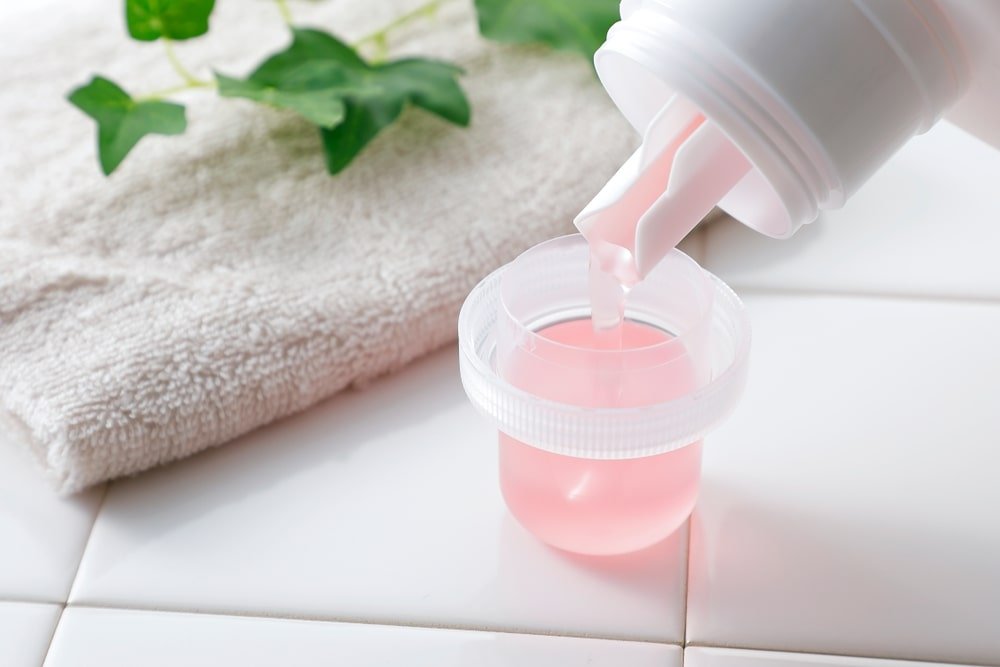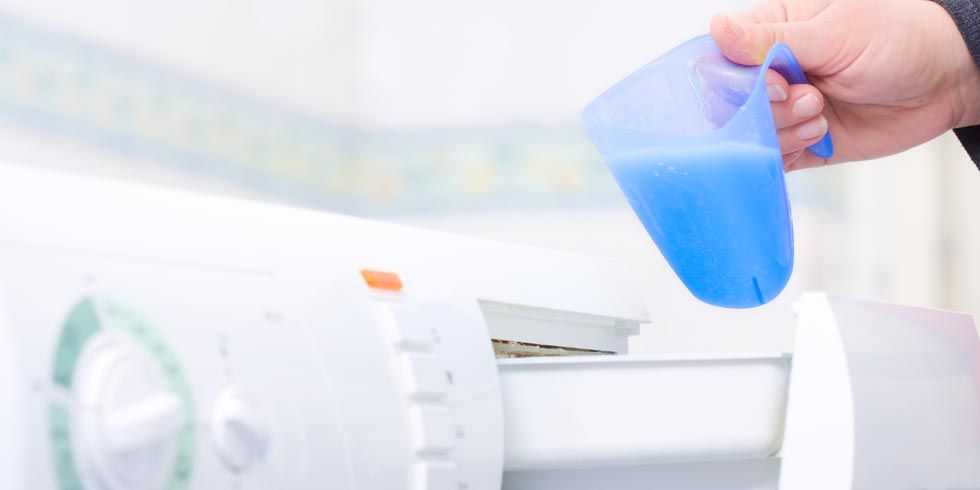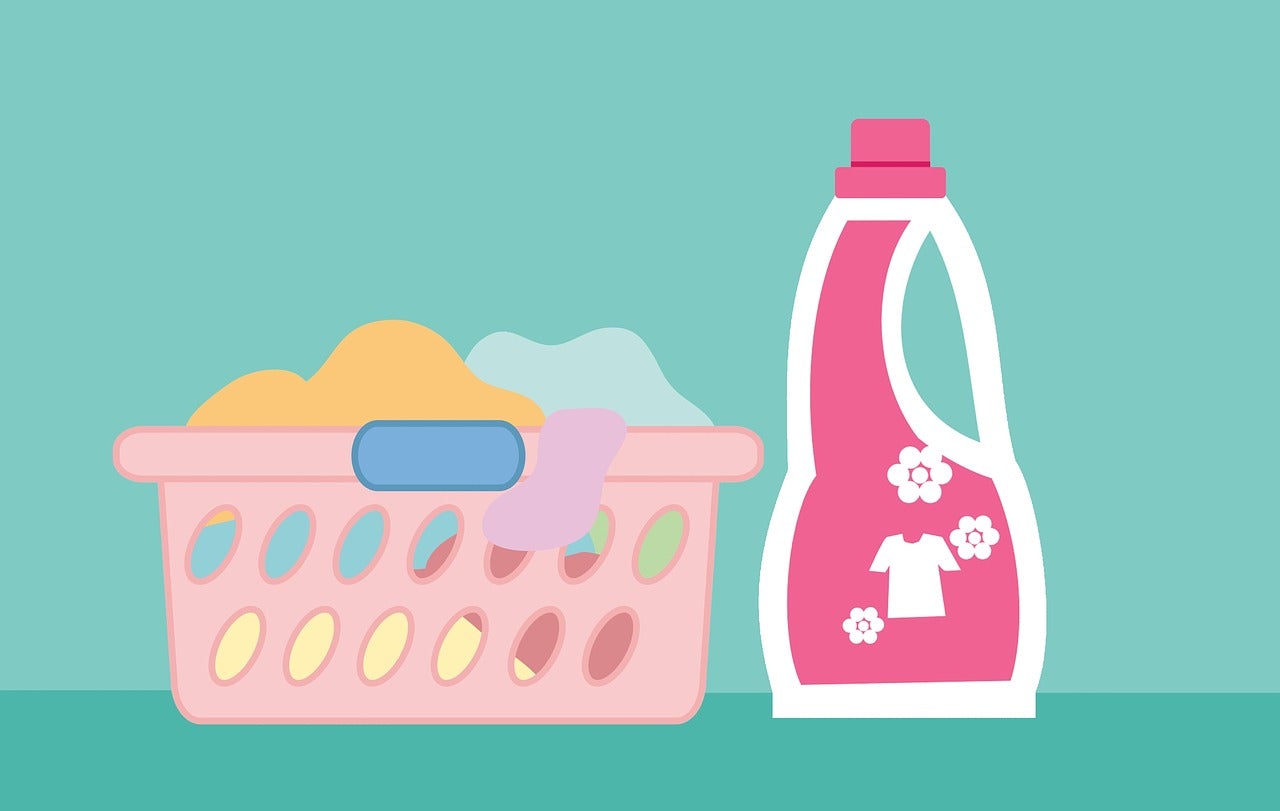How does a HE washer work?
HE washing machines have a special kind of motor, pump and computer parts that let it be aware of the water level in the drum.
The HE washing machine will only use as much water as necessary to clean your clothes. The excess energy used by traditional top-loading washers is now being used efficiently to save you time and money. They will wash a small load using the same amount of water like a full-size washer. You can use less detergent and your clothes will have a better clean because the water doesn't go where it's not needed.
There are many benefits to owning an HE front loading washing machine. Besides saving energy, you'll also save time and money on detergent costs as well as wrinkled clothes from excess water being used in traditional top-loading washers. It also takes much less time to do a load of laundry in an HE front loader than with a top loader, so if you're short on time, this may be a great option for you.
High-Efficiency Washing Machine (HE) – "High" refers to how well it washes compared to traditional top-loading washers and the amount of water used. An HE washing machine is specifically designed for high efficiency. It won't remove as much dirt or stains but they are great at saving water and detergent costs over time! A standard top loader uses about 40 gallons per load while an HE front loader uses only 13 gallons of water on average.
What does a fabric softener consist of?
Fabric softeners are specifically designed to reduce static cling in addition to adding a fresh scent or softness to your clothes. They coat your clothing with special chemicals that react differently than detergent does, so be careful if you use fabric softener on towels or other items that would normally not need it.
It consists of chemicals that coat your clothing, reducing static cling.
These are all the ingredients of liquid fabric softener: Water, Cationic Surfactant, Nonionic Surfactant, Fragrance (often Phthalate), Preservative (often Formaldehyde-Rinsing Quaternary Ammonium Salt).
Triple concentrated detergent is not used due to cost and because extra additives would be needed for color-safe bleach protection or any other heavy soil conditions. Fabric Softening agents act as anti-static (reducing static) and also help reduce wrinkles. If you're concerned about chemicals found in these products, look for natural alternatives like vinegar or baking soda.
Fabric softeners coat fabrics with positively charged particles, which in turn bind to and separate negatively charged fibers. If you use fabric softener on towels or other items that would normally not need it, the special chemicals will react differently than detergent does. This may cause damage to your clothes and they may lose their absorbency.

Is Fabric Softener HE safe?
Many people assume using both fabric softener and HE washer is fine because the material doesn't contain "detergents", but this isn't true. Fabric softeners can cause significant problems for an HE machine if used too frequently; they will eventually destroy its pump due to the buildup of waxy residues!
On top of that, these washers sense how much water should be inside by weight, so the water level in the washer drum is tightly controlled. Adding too much fabric softener can cause a big problem because it weighs a lot more than water and would throw off the sensors!
In short, if you use too much dryer sheet or liquid fabric softener, your machine's pump will be damaged over time.
If your washer has the "HE" designation, it's extra important to follow usage directions because these machines use much less water. The softener or conditioner should be added directly into the drum before adding laundry.
If your model doesn't have a specific dispensing drawer for fabric softener, add it at the start of the wash cycle. Don't let it sit in the dispenser until you are ready to add clothes or run output it in early!
You may need to experiment with how much softener is needed in different loads because too much can leave a residue that makes your clothes stiff, so keep this in mind when adjusting quantities each time you use them!
The amount will vary depending on factors including machine type, load size, the hardness level of water supply, etc. You can buy fabric softener sheets for use in your dryer and also as a means to deodorize stale-smelling clothing.
To use the sheet: Toss it into your dryer along with laundry and turn the heat setting to medium or high, depending on how hot you normally like the drying cycle. More heat is needed for heavily soiled loads. For best results, run two or three cycles per sheet (for maximum freshness). Some people like to save money by purchasing generic brands at the dollar store or using dryer balls instead of liquid softeners - both work well!
If you have certain types of clothes that need dry-cleaning, like wool sweaters or coats, you can reuse the fabric sheet to deodorize them in their drawers. Just use it once per drawer.
Should you always use fabric softener for all laundry?
Some items like towels need to be washed with fabric softener so they will not scratch your skin. Using regular detergent on these types of products may cause damage and actually make them more abrasive.
It is a good idea to use a liquid fabric softener or dryer sheet for certain items, such as towels, sheets, pajamas, etc.
Note: you can even substitute half the amount of liquid fabric softener with white vinegar if you find that works better for you! It's natural and environmentally friendly as well as being much cheaper than commercial brands. You can also add essential oils to the mix if you'd like an added touch of fragrance during washing/drying cycles.
You should also check the 'care label' on any fabric in order to determine whether or not it should be combined with a fabric softener.
How can you choose a good fabric softener?
Look for ones that don't contain SLES, phosphates, or dyes. They should also be phosphate-free, dye-free, and free of other harsh chemicals. Many people use vinegar in the rinse cycle to add softness and reduce static cling.

Fabric softener is a great fabric refresher that can help keep clothing smelling fresh between washes--but only if you choose your product carefully. If you want to avoid irritating or sensitizing your skin when you're choosing one for yourself or a loved one who has special needs, try these tips:
- Skip traditional fabric softeners in favor of dryer sheets. These products typically contain amounts of fragrance (just enough to be detectable) so they won't irritate people with sensitivities.
- Use only a little fabric softener at a time to prevent awful smelling residue from collecting in your machine and making your clothes smell off-putting. This is especially important if you have a HE washer, as it can cause damage over time. If you must use lots of softener for extra freshness, run the load twice – first adding the natural product and then again after the cycle ends with regular detergent (or even vinegar).
Don't use fabric softener on waterproof clothing! If you do, the clothing will no longer be waterproof and could cause a serious accident or injury.
TOP-15 best regular fabric softeners
- Snuggle Exhilarations Liquid Fabric Softener
- Downy April Fresh Liquid Fabric Softener
- Snuggle Boosters in-Wash Scent Booster for Freshness and Odor Control
- Gain Fireworks In-wash Scent Booster and Dryer Sheets
- Bounce Fabric Softener Outdoor Fresh Dryer Bar: 2 count
- Bounce Free & Gentle Dryer bar: 5 count
- Downy Unstopables In-Wash Scent Booster, Smoky Mountain Lilac: 8 fl oz (237 mL)
- Downy Unstopables In-Wash Scent Booster, Island Splash: 8 fl oz (237 mL)
- Gain Flings Original Laundry Detergent Pacs: 35 ct
- Gain Flings Original Fabric Enhancer in Fresh: 33 fl oz (1 liter)
- Kirkland Signature Ultra Downy Liquid Fabric Softener, Fresh Start 25.2 fl oz
- Kirkland Signature Ultra Downy Liquid Fabric Softener Lavender & Jasmine 26 fl oz (737 mL)
- Gain Fireworks In-Wash Scent Booster and Dryer Sheets
- Snuggle Exhilarations Liquid Fabric Softener
- Arm & Hammer Plus Febreze Sports 1 in 3 Laundry Detergent Pacs, Clean Burst: 24 ct
Do you use fabric softener correctly?
Yes, you can always read the instructions on the back of the fabric softener label to find out how much is needed for your washer, but here we will tell you how to use it correctly in different types of washers.
Thus, for front-loaders, a liquid softener should be added to the dispenser near the end of the wash. If you don't have a separate dispenser, just add it at the beginning before adding clothing.
For top-load washers, fabric softener is typically diluted with water and then sprayed on during filling. You can either spray it yourself or ask someone else in your household to do it for you.
You may need to experiment with how much softener is needed in different loads because too much can leave a residue that makes your clothes stiff, so keep this in mind when adjusting quantities each time you use them! The amount will vary depending on factors including machine type, load size, the hardness level of water supply, etc.
What are the alternatives to fabric softeners?
There are many alternatives to fabric softeners that you can purchase. While these products may not leave your clothes as soft as a liquid or dryer sheet would, they will leave them smelling fresh and clean without the side effects of chemicals.
Using natural ingredients like baking soda, white vinegar, and essential oils, for example, is one way you can soften your laundry without using commercial fabric softeners.

Here's how: First up, we have a recipe for fabric softener using only baking soda and hot water. You'll need 1/2 cup of baking soda and 1/2 gallon (64 ounces) of hot water. Just mix it all together until the baking soda has dissolved completely in the water. Then put it into an empty fabric softener box or jug you might already have at home.
This is great for top-loading washing machines like the one you probably have in your home now. For front loaders, try this pure white vinegar solution. Combine 1/2 cup of vinegar with 64 ounces (4 quarts) of lukewarm water, shake it up and pour it into a jar with a lid – you can use an empty fabric softener bottle if you want to.
For dryer balls, cut up a couple of old hand towels or some socks and tie them together so they won't fall apart inside the dryer. Fill these homemade wool balls with essential oils, then toss them in as usual. They will help soften your clothes without leaving a chemical smell.
Tips on how to wash in a HE washer:
- You don't have to use as much soap as you used to.
- Don't be afraid to wash water temperature-sensitive items in hot or cold water. -Most newer HE machines have a special setting just for drying towels, so toss those in first on that setting and set it on medium heat.
- Add a quarter cup of distilled white vinegar to the bleach compartment every few times you bleach whites.
- If something feels extra stiff after being washed by hand or machine, make your own fabric softener by mixing 1/2 cup of white vinegar with 1 quart of water, then just pour it into your final rinse cycle.
- You can also try using an all-natural fabric softener like this one that uses baking soda and essential oils instead.
Bottom line
Although this article might have seemed like a long read, it was hopefully easy to understand once you've gone through it! If anything remains unclear, just ask us in the comments section at the end of the article.
Thank you for reading our article. Have a great day and happy laundry!